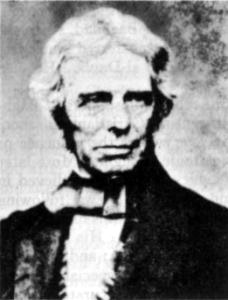
Henry Ford was born on July 30, 1863, making him the first child of William and Mary Ford's six children. At an early age he expressed great interest in mechanical things and not his farm work. At age 16, Henry left home to become an apprentice machinist for three years although he would occasionally come home and work on the farm with his parents. After his apprenticeship had ended he divided his time between the farm and working on steam engines. Upon his marriage to Clara Bryant in 1888 he supported his new family by running a saw mill. In 1891 he became an engineer in the Edison Illuminating Company. In 1893 he was promoted to chief engineer, which gave him the time and the money to pursue his own interests in the combustion engine. The Ford Motor Company was established in 1903, however very unsuccessful. In 1908 he began producing the Model T. This car was a great success. It was cheap and reliable. In 1913 he introduced the moving assembly line which allowed the company to mass produce the cars, and thus reducing the price of the car even more.
 Richard Trevithick was born in1771 in Illogan, Cornwall. In high school he was much more interested in sports than learning. Some called him "The Cornish Giant" because he grew to a size of 6 foot 2 inches. Trevethick loved steam engines. In 1796 he produced a working engine boiler combination. After his success on the model engine he decided to create a full scale engine. On Christmas Eve 1801, Trevethick and some friends went for a short ride on "The Puffing Devil". Although it worked well it could not hold the steam for very long which made it quite impractical for use. In 1804 he created the first steam locomotive to successfully run on rails. It made three successful runs, however the 7-ton locomotive broke the rails every time so it was abandoned. He jumped from failure to fail until he died on April 22, 1833. His uses of steam can rightly credit him as the father of steam locomotives.
Richard Trevithick was born in1771 in Illogan, Cornwall. In high school he was much more interested in sports than learning. Some called him "The Cornish Giant" because he grew to a size of 6 foot 2 inches. Trevethick loved steam engines. In 1796 he produced a working engine boiler combination. After his success on the model engine he decided to create a full scale engine. On Christmas Eve 1801, Trevethick and some friends went for a short ride on "The Puffing Devil". Although it worked well it could not hold the steam for very long which made it quite impractical for use. In 1804 he created the first steam locomotive to successfully run on rails. It made three successful runs, however the 7-ton locomotive broke the rails every time so it was abandoned. He jumped from failure to fail until he died on April 22, 1833. His uses of steam can rightly credit him as the father of steam locomotives.



